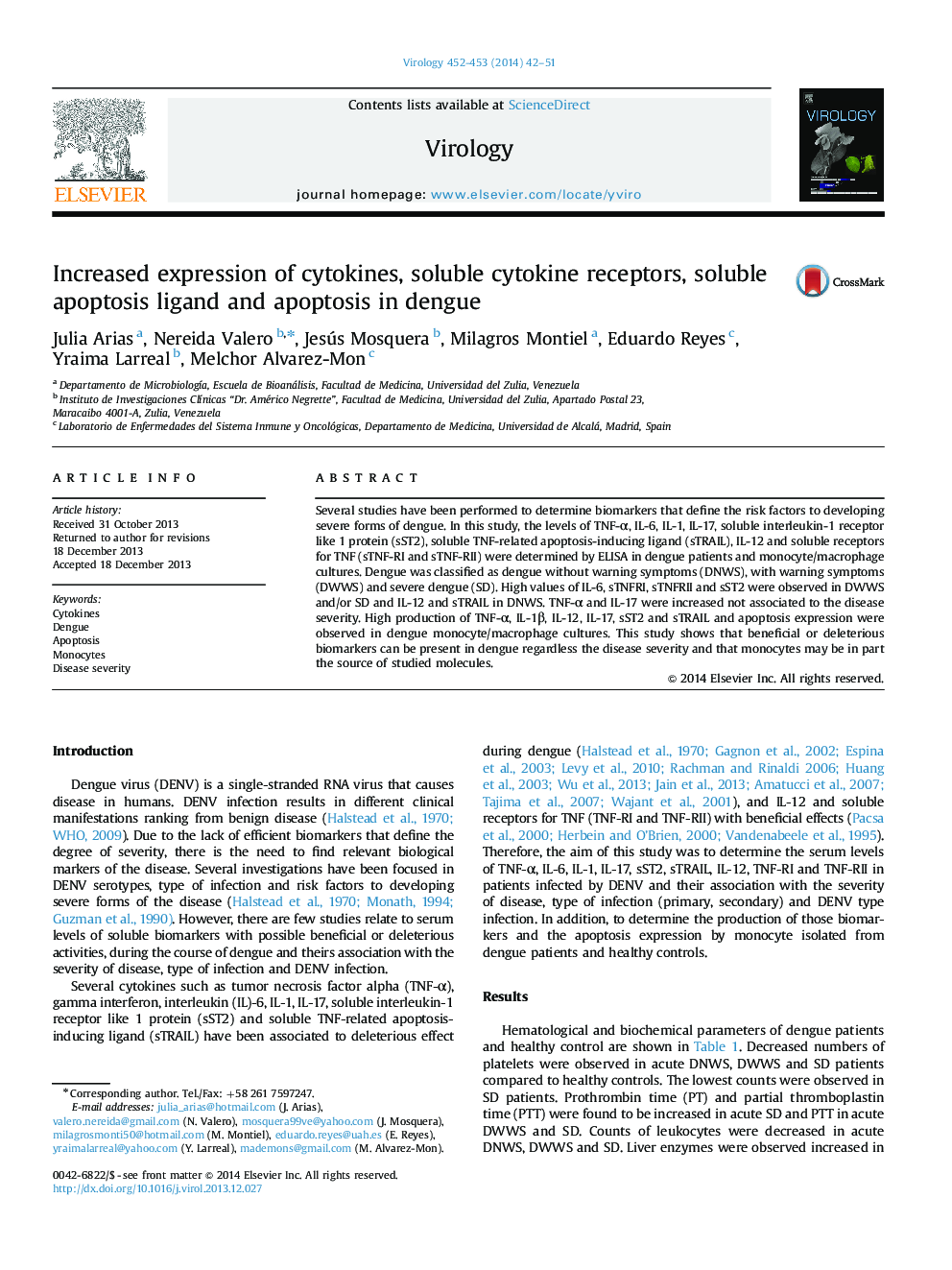| Article ID | Journal | Published Year | Pages | File Type |
|---|---|---|---|---|
| 6140233 | Virology | 2014 | 10 Pages |
Abstract
Several studies have been performed to determine biomarkers that define the risk factors to developing severe forms of dengue. In this study, the levels of TNF-α, IL-6, IL-1, IL-17, soluble interleukin-1 receptor like 1 protein (sST2), soluble TNF-related apoptosis-inducing ligand (sTRAIL), IL-12 and soluble receptors for TNF (sTNF-RI and sTNF-RII) were determined by ELISA in dengue patients and monocyte/macrophage cultures. Dengue was classified as dengue without warning symptoms (DNWS), with warning symptoms (DWWS) and severe dengue (SD). High values of IL-6, sTNFRI, sTNFRII and sST2 were observed in DWWS and/or SD and IL-12 and sTRAIL in DNWS. TNF-α and IL-17 were increased not associated to the disease severity. High production of TNF-α, IL-1β, IL-12, IL-17, sST2 and sTRAIL and apoptosis expression were observed in dengue monocyte/macrophage cultures. This study shows that beneficial or deleterious biomarkers can be present in dengue regardless the disease severity and that monocytes may be in part the source of studied molecules.
Related Topics
Life Sciences
Immunology and Microbiology
Virology
Authors
Julia Arias, Nereida Valero, Jesús Mosquera, Milagros Montiel, Eduardo Reyes, Yraima Larreal, Melchor Alvarez-Mon,
